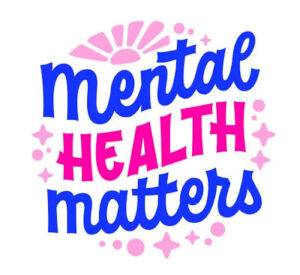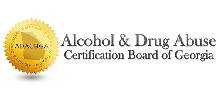Mental health assessments in Atlanta are structured methods utilized by mental health professionals to evaluate an individual’s psychological state. These assessments can take various forms, including clinical interviews, standardized questionnaires, self-reports, and observational assessments. They serve not only to diagnose mental health disorders but also to inform treatment planning and track progress over time.
The significance of mental health assessments lies in their ability to uncover critical psychological, emotional, and behavioral patterns. They help identify the underlying causes of distress, facilitate early intervention, and personalize treatment plans that cater to the individual’s needs. By providing a comprehensive picture of a person’s mental health, these assessments enable effective communication between practitioners and clients, fostering a therapeutic alliance conducive to recovery [Source: Atlanta Treatment Center].
Common Methods Used in Mental Health Assessments
Methods commonly employed in mental health assessments include structured clinical interviews like the Diagnostic and Statistical Manual of Mental Disorders (DSM-5) criteria, self-report tools such as the Beck Depression Inventory, and behavioral assessments through direct observation. Each of these approaches contributes uniquely to understanding the individual’s mental state, leading to more targeted and effective interventions.

The Impact of Assessments on Treatment Outcomes
The impact of these assessments extends to improved treatment outcomes. Research indicates that thorough mental health evaluations can lead to enhanced client engagement, greater adherence to treatment, and significant reductions in symptoms of mental health disorders. By establishing a solid foundation for treatment, mental health assessments not only enhance the care provided but also support long-term recovery goals for individuals.
For more insights on the relationship between mental health evaluations and recovery processes, refer to related content on alcohol and drug evaluations or explore the factors to consider in evaluations.
Key Functions of Mental Health Assessments
Mental health assessments are vital in the journey towards mental well-being, as they serve multiple key functions: identifying issues, guiding treatment, and measuring progress. Primarily, these assessments help mental health professionals recognize the presence of psychological disorders or symptoms that might otherwise go unnoticed. Early detection through standardized assessments can lead to more effective intervention strategies and better outcomes for individuals deemed at risk for conditions such as depression, anxiety, or substance use disorders [Source: Atlanta Treatment Center].
Furthermore, mental health assessments provide a structured way for clinicians to develop personalized treatment plans. Through data collected during these assessments, healthcare providers can identify relevant therapeutic options, set measurable goals, and tailor interventions to address specific needs [Source: Atlanta Treatment Center]. For example, a comprehensive evaluation may inform the choice of integrated approaches, such as counseling in conjunction with Medication-Assisted Treatment (MAT) for those struggling with addiction [Source: Atlanta Treatment Center].
Ongoing Monitoring Through Assessments
Regular assessments also facilitate ongoing monitoring of patient’s progress, enabling adjustments in treatment as needed. Tracking changes in symptoms and overall mental health can help determine the effectiveness of interventions and ensure that support levels are appropriate [Source: Atlanta Treatment Center]. This adaptive approach is particularly important in the context of evolving mental health challenges, where initial strategies may require modifications based on patient response.
Assessment Tools: PHQ-9 and GAD-7
The PHQ-9 (Patient Health Questionnaire-9) and GAD-7 (Generalized Anxiety Disorder-7) are prominent assessment tools utilized by mental health practitioners to diagnose and monitor depression and anxiety respectively. The PHQ-9, consisting of nine questions, assesses symptoms of depression based on the DSM-5 criteria. It helps clinicians gauge the severity of depression by asking individuals to reflect on their experiences over the past two weeks. Research indicates that it has high sensitivity and specificity for detecting major depressive disorders, making it a reliable tool for clinical use in various settings, including primary care and specialty mental health offices.
Similarly, the GAD-7 measures anxiety symptoms through seven questions, focusing on how often individuals have been bothered by anxiety-related issues in the last two weeks. It is effective in screening for generalized anxiety disorder and has been associated with the severity levels of anxiety symptoms, allowing for tailored treatment plans.
Both assessments provide structured ways to monitor changes in symptoms over time, evaluate treatment effectiveness, and facilitate discussions about mental health issues during patient visits. For more comprehensive resources on the importance of mental health assessment tools, see our article on the importance of mental health assessments.
Standardized Measurements in Mental Health Assessments
Standardized measurements in mental health assessments play a critical role in enhancing the accuracy and objectivity of evaluations. These tools provide a reliable basis for identifying mental health conditions, enabling clinicians to compare results across different populations and treatments effectively. For example, the use of validated scales such as the Beck Depression Inventory allows for consistent measurements that can be tracked over time. This leads to more tailored interventions and facilitates communication about treatment progress among healthcare providers.
Improved treatment planning is another significant advantage of employing standardized assessments. By utilizing structured frameworks, mental health professionals can systematically identify not only the primary issues at hand but also any co-occurring disorders. This comprehensive approach allows for a more holistic treatment strategy, resulting in better patient outcomes.
Furthermore, enhanced patient-provider communication is crucial for successful treatment. Standardized assessments create a common platform for discussion, allowing patients to better understand their conditions and treatment options. According to research, when patients are actively involved in their treatment planning, they report higher satisfaction and are more likely to adhere to prescribed interventions. Such collaborative efforts not only empower patients but also improve the therapeutic alliance, critical for successful mental health outcomes.

Conclusion
In summary, the integration of standardized measurements into mental health assessments leads to more accurate diagnoses, effective treatment planning, and meaningful communication between patients and providers, ultimately enhancing the quality of care delivered. For more on the importance of these assessments, check our article on Understanding the Importance of Mental Health Assessment.
Sources
- Atlanta Treatment Center – The Effects of Alcoholism
- Atlanta Treatment Center – Treatment Plan for Alcohol and Drug Evaluation
- Atlanta Treatment Center – Understanding the Importance of Mental Health Assessment
- Atlanta Treatment Center – Why an Alcohol and Drug Evaluation is the First Step Toward Recovery










